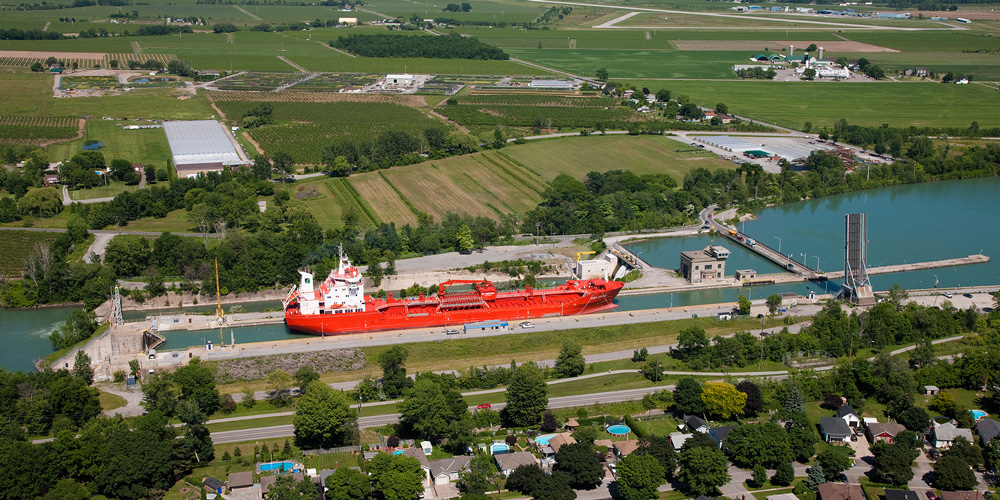Seaway Continues to Attract New Cargoes as Innovative Program Gains Momentum
October 13, 2006
Cornwall, Ontario, October 13, 2006 – The St. Lawrence Seaway Management Corporation (SLSMC) reported today that traffic and tonnage volumes on the Seaway continue to advance at a pace not witnessed for many years. Total cargo volume at the end of September amounted to 31.9 million tonnes, as the rate of growth in new cargoes attracted to the system grows at a blistering annual pace of over 100%.
As part of its ongoing Hwy H2O program, which seeks to promote the advantages of marine transportation and attract new shippers to the system, the SLSMC has instituted a new incentive toll system. This initiative has enjoyed excellent results, with over 400,000 tonnes of new cargo contributing almost $1 million of incremental revenue as of September 30th. “We are particularly pleased with the way shippers are starting to look for the ‘marine advantage’ and the innovative approach being taken by many ship operators to move this new cargo” stated Richard Corfe, SLSMC President and CEO.
Shipments of grain and steel products continue to record strong gains this year. Combined with consistent volumes in other sectors, the Seaway expects that the close of 2006 will usher in the best results since the late 1990’s. Even so, the Seaway holds yet more potential to meet burgeoning trade volumes that are straining other modes of transportation. Currently operating at about 60% capacity, the Seaway’s existing locks and channels can readily accommodate almost double the present cargo volume.
While overall transits are about 10% higher than last year, ocean vessel transits are up almost 30%. With this increase comes increased vigilance through the implementation of enhanced verification procedures and extensive ballast water testing prior to vessels entering the system, including those with no ballast on board (the so called NOBOBs). “An outcome of this is a heightened awareness on board vessels and a significant increase in the number of NOBOB vessels able to flush their ballast tanks with salt water” says Mr. Corfe.
The allure of routing goods to market via the Seaway is becoming more evident as coastal ports struggle to meet the tide of imports pouring in from Asia. Some importers are now establishing routes from Asia to Halifax, via the Suez Canal, setting the stage for feeder vessels to take cargo further inland. Feeder vessels, which can accept cargoes from large ocean vessels and bring the cargo inland to a port near the final destination, hold great promise to improve our nations’ energy efficiency, lower greenhouse gas emissions, decrease congestion on our highways, and improve our air quality.






